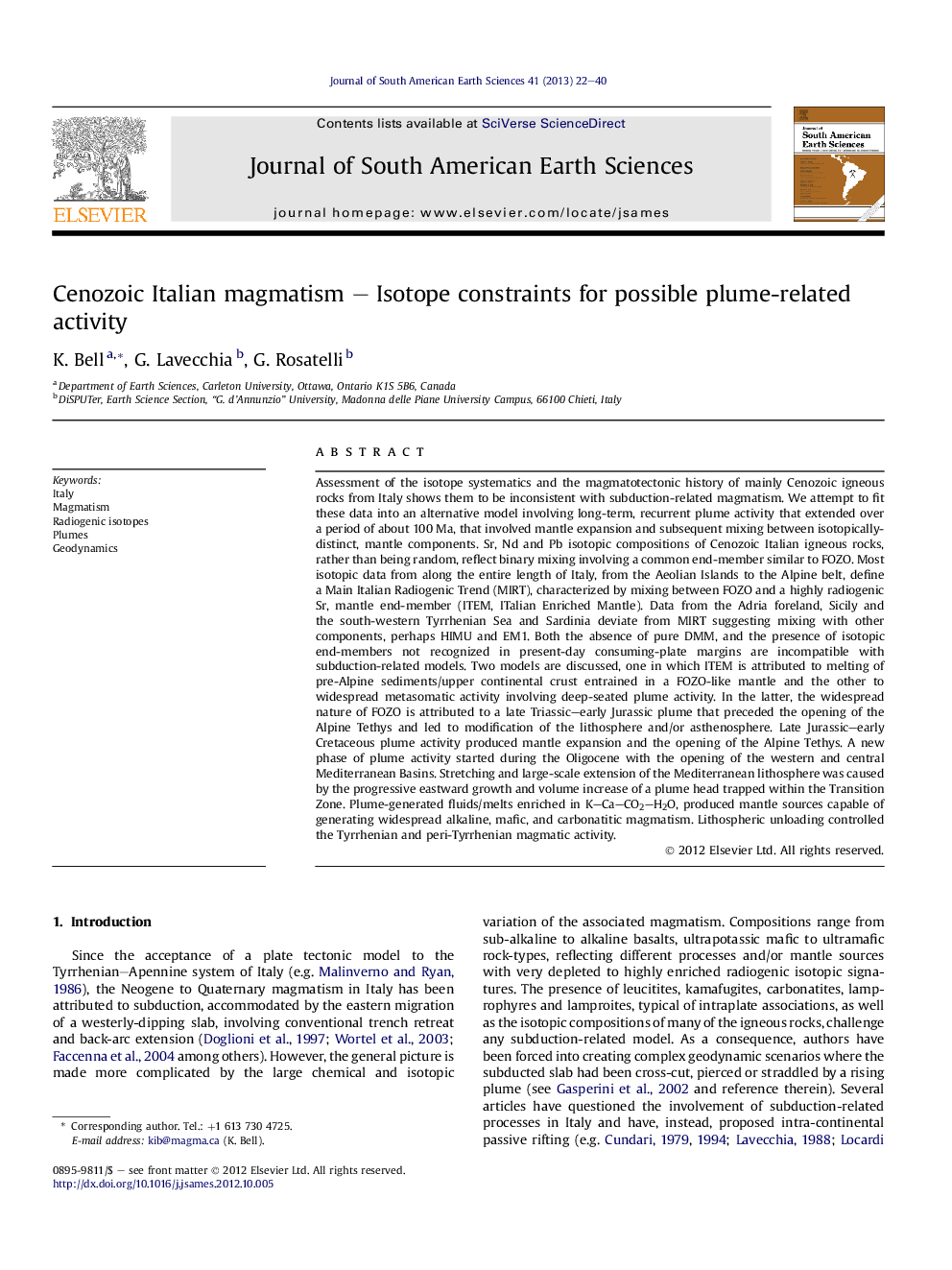| کد مقاله | کد نشریه | سال انتشار | مقاله انگلیسی | نسخه تمام متن |
|---|---|---|---|---|
| 4682456 | 1635168 | 2013 | 19 صفحه PDF | دانلود رایگان |
عنوان انگلیسی مقاله ISI
Cenozoic Italian magmatism - Isotope constraints for possible plume-related activity
دانلود مقاله + سفارش ترجمه
دانلود مقاله ISI انگلیسی
رایگان برای ایرانیان
کلمات کلیدی
موضوعات مرتبط
مهندسی و علوم پایه
علوم زمین و سیارات
علوم زمین و سیاره ای (عمومی)
پیش نمایش صفحه اول مقاله

چکیده انگلیسی
Assessment of the isotope systematics and the magmatotectonic history of mainly Cenozoic igneous rocks from Italy shows them to be inconsistent with subduction-related magmatism. We attempt to fit these data into an alternative model involving long-term, recurrent plume activity that extended over a period of about 100 Ma, that involved mantle expansion and subsequent mixing between isotopically-distinct, mantle components. Sr, Nd and Pb isotopic compositions of Cenozoic Italian igneous rocks, rather than being random, reflect binary mixing involving a common end-member similar to FOZO. Most isotopic data from along the entire length of Italy, from the Aeolian Islands to the Alpine belt, define a Main Italian Radiogenic Trend (MIRT), characterized by mixing between FOZO and a highly radiogenic Sr, mantle end-member (ITEM, ITalian Enriched Mantle). Data from the Adria foreland, Sicily and the south-western Tyrrhenian Sea and Sardinia deviate from MIRT suggesting mixing with other components, perhaps HIMU and EM1. Both the absence of pure DMM, and the presence of isotopic end-members not recognized in present-day consuming-plate margins are incompatible with subduction-related models. Two models are discussed, one in which ITEM is attributed to melting of pre-Alpine sediments/upper continental crust entrained in a FOZO-like mantle and the other to widespread metasomatic activity involving deep-seated plume activity. In the latter, the widespread nature of FOZO is attributed to a late Triassic-early Jurassic plume that preceded the opening of the Alpine Tethys and led to modification of the lithosphere and/or asthenosphere. Late Jurassic-early Cretaceous plume activity produced mantle expansion and the opening of the Alpine Tethys. A new phase of plume activity started during the Oligocene with the opening of the western and central Mediterranean Basins. Stretching and large-scale extension of the Mediterranean lithosphere was caused by the progressive eastward growth and volume increase of a plume head trapped within the Transition Zone. Plume-generated fluids/melts enriched in K-Ca-CO2-H2O, produced mantle sources capable of generating widespread alkaline, mafic, and carbonatitic magmatism. Lithospheric unloading controlled the Tyrrhenian and peri-Tyrrhenian magmatic activity.
ناشر
Database: Elsevier - ScienceDirect (ساینس دایرکت)
Journal: Journal of South American Earth Sciences - Volume 41, January 2013, Pages 22-40
Journal: Journal of South American Earth Sciences - Volume 41, January 2013, Pages 22-40
نویسندگان
K. Bell, G. Lavecchia, G. Rosatelli,